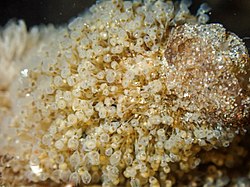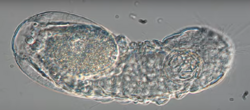
Bilateria is an extremely diverse group of animals containing a vast majority of its species, largely due to the enormous amount of arthropods. This article is a list of orders contained within Bilateria separated by phylum. Groups that are not contained within an order are listed separately.
Contents
- List
- Phylum Annelida
- Phylum Arthropoda
- Phylum Brachiopoda
- Phylum Bryozoa
- Phylum Chaetognatha
- Phylum Chordata
- Phylum Cycliophora
- Phylum Dicyemida
- Phylum Echinodermata
- Phylum Entoprocta
- Phylum Gastrotricha
- Phylum Gnathostomulida
- Phylum Hemichordata
- Phylum Kinorhyncha
- Phylum Loricifera
- Phylum Micrognathozoa
- Phylum Mollusca
- Phylum Nematoda
- Phylum Nematomorpha
- Phylum Nemertea
- Phylum Onychophora
- Phylum Orthonectida
- Phylum Phoronida
- Phylum Platyhelminthes
- Phylum Priapulida
- Phylum Rotifera
- Phylum Tardigrada
- Phylum Xenacoelomorpha
- Notes
- References



























